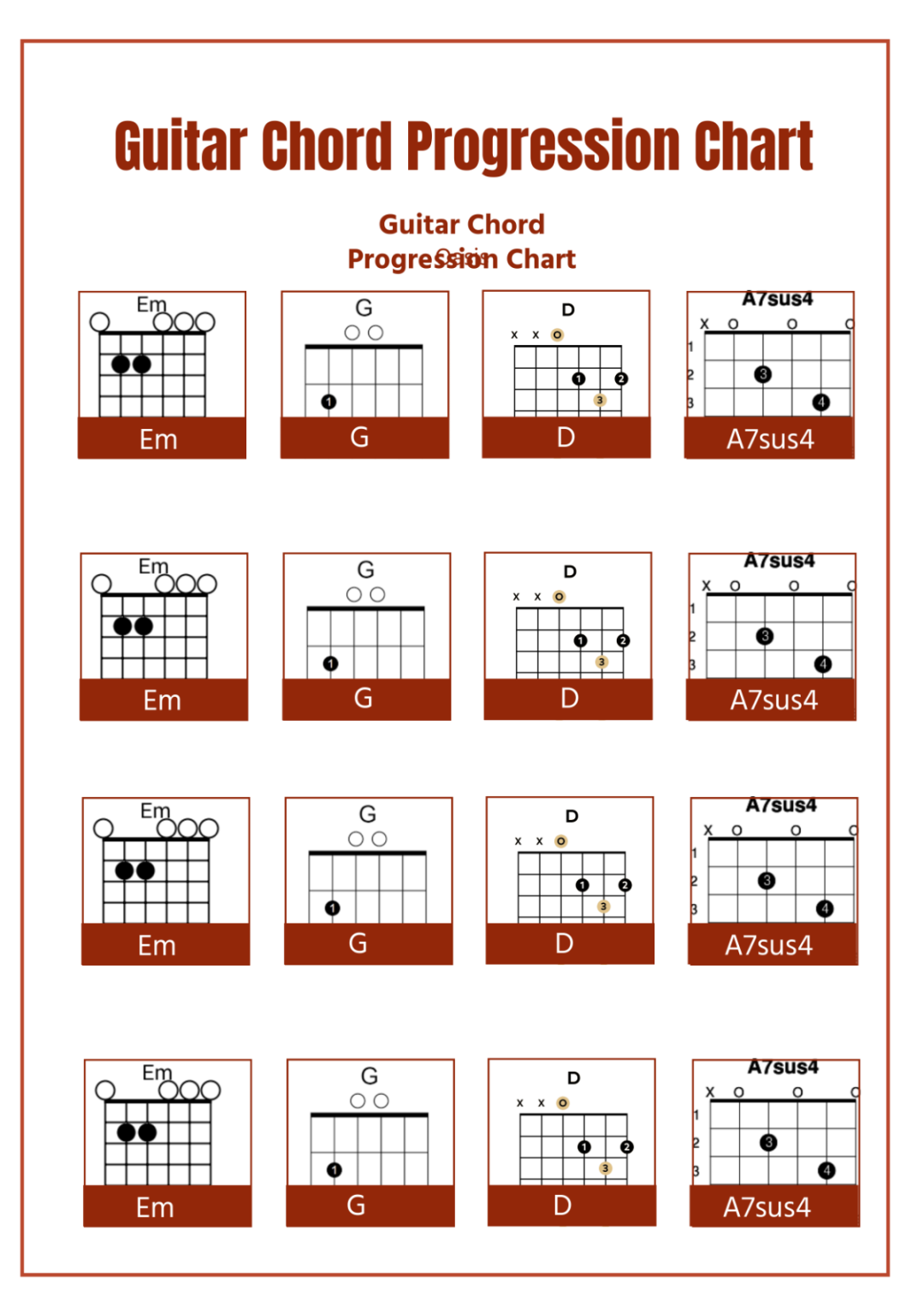—
Guitar Chord Progressions Online: Your Gateway to Musical Creativity
So, you’re a guitarist, right? Maybe you’re just starting out, or perhaps you’ve been strumming for a while. Either way, you’ve probably hit that point where you’re itching to create your own music. You’re tired of just playing other people’s songs and want to explore the world of songwriting. And that’s where chord progressions come in.
Now, you might be thinking, “Chord progressions? Sounds complicated.” But trust me, it’s not as scary as it sounds. In fact, it’s one of the most fun and creative parts of playing the guitar. And the best part? You don’t need to be a music theory whiz to get started. Thanks to the internet, there’s a treasure trove of resources available online that can help you learn and create amazing chord progressions.
What are Chord Progressions Anyway?

Let’s break it down. A chord progression is simply a series of chords played one after another. Think of it as the backbone of a song. It’s what gives a song its structure and emotional feel. Different chord progressions can evoke different moods, from happy and upbeat to sad and melancholic.
Think of those pop songs you love, or those classic rock anthems. They’re all built on chord progressions. And with a little know-how, you can create your own.
Why Go Online for Chord Progressions?
The internet has revolutionized how we learn music. You can find everything from basic tutorials to advanced theory lessons, all from the comfort of your own home. Here’s why going online for chord progressions is a smart move:
Endless Resources:
You’re not limited to what your local music teacher knows or what’s in a single book. Online, you have access to a vast library of information, including websites, YouTube channels, and online forums dedicated to guitar and music theory.
Interactive Tools:
Many websites offer interactive tools that allow you to experiment with different chord progressions. You can listen to how they sound, change the tempo, and even transpose them to different keys. It’s like having a virtual band at your fingertips.
Community Support:
Online forums and communities are a great place to connect with other guitarists. You can ask questions, share your own progressions, and get feedback from experienced musicians.
Learning at Your Own Pace:
Online resources allow you to learn at your own pace. You can revisit lessons as many times as you need, and you can focus on the areas that you find most challenging.
Where to Find Chord Progressions Online
So, where do you start? Here are a few places to check out:
YouTube:
YouTube is a goldmine for guitar tutorials. You can find countless videos on chord progressions, from beginner-friendly lessons to advanced theory breakdowns. Search for terms like “easy guitar chord progressions” or “how to write chord progressions.”
Websites:
Many websites offer chord charts and progressions, often with audio examples. Some sites even allow you to create your own progressions and share them with others.
Online Forums:
Guitar forums and communities are a great place to ask questions and get advice from experienced musicians. You can also find discussions on chord progressions and songwriting.
Tips for Creating Your Own Chord Progressions
Now that you know where to find resources, let’s talk about creating your own chord progressions. Here are a few tips to get you started:
Start Simple:
Don’t try to create complex progressions right away. Start with simple progressions using basic chords like C, G, D, and Am.
Experiment with Different Keys:
Try playing the same progression in different keys. This can change the feel of the progression and give you new ideas.
Listen to Your Favorite Songs:
Pay attention to the chord progressions in your favorite songs. Try to figure out the chords and analyze how they work together.
Use a Capo:
A capo is a great tool for changing the key of a song without having to learn new chords.
Don’t Be Afraid to Experiment:
There are no rules when it comes to creating chord progressions. Don’t be afraid to experiment and try different combinations of chords.
The Emotional Impact of Chord Progressions
Remember, chord progressions aren’t just about playing chords in a sequence. They’re about creating a feeling, an emotion. Certain progressions are known for evoking specific moods. For example, minor chords often create a sad or melancholic feel, while major chords tend to sound happy and upbeat.
Understanding the emotional impact of different chords and progressions can help you write more effective and expressive songs. It’s about using the tools you have to paint a sonic picture, to tell a story through your music.
Keeping it Fresh and Original
While learning common chord progressions is a great starting point, the real magic happens when you start to experiment and create your own unique sounds. Try adding passing chords, using inversions, or incorporating different rhythms.
Don’t be afraid to break the “rules” and see what happens. Some of the most iconic songs were born from experimentation and a willingness to try something new.
Conclusion:
The internet has democratized music creation, making it easier than ever to learn and experiment with guitar chord progressions. Whether you’re a beginner looking to learn the basics or an experienced guitarist seeking inspiration, the online world offers a wealth of resources to fuel your creativity. So, grab your guitar, fire up your computer, and start exploring the endless possibilities of chord progressions. Remember, the journey of songwriting is a continuous process of discovery and experimentation. Don’t be afraid to make mistakes, learn from them, and most importantly, have fun. The world of music is waiting for your unique voice.

